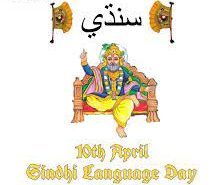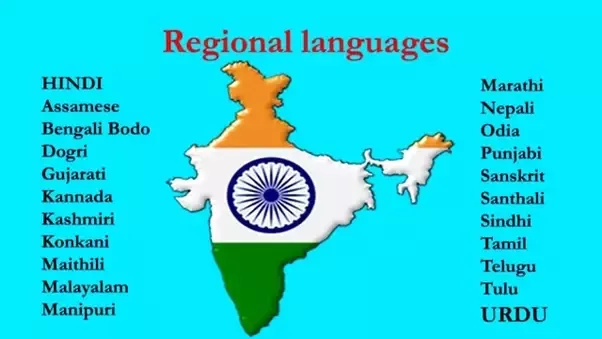
Like Community, Like Language: Seventy-Five Years of Sindhi in Post-Partition India
By Arvind Iyengar and Sundri Parchani
Since Partition, the Sindhi language in India has frequently been written off by scholars and laypersons alike, citing supposed linguistic corruption, ever-shrinking domains of use, and near-obsolescence in written form. However, census figures have consistently registered an increase in Sindhi speakers in India over the last seven decades. This article argues for a fresh approach to analyzing the journey of Sindhi in post-Partition India to explain this apparent discrepancy. It adopts a language-ecological perspective and evaluates salient grammatical, sociolinguistic, and script-related changes in Indian Sindhi over the last seventy-five years. The article maintains that these changes represent structurally and sociolinguistically plausible adaptations to the language’s ecosystem since Partition. It concludes that, despite a reduction in domains of use, changes in Indian Sindhi, together with an increase in speakers, testify to the language’s survival in India.
Introduction
Following the 1947 Partition of British India and the arrival of nearly eight hundred thousand refugees from Sindh in what became independent India, much has been said, written, and debated on the state and fate of the Sindhi language in the country. Overall, prognoses on the future of the language in India have routinely painted a bleak picture. Such pessimism appears to hinge on a perceived decline or decay in three distinct language domains: structural purity, function in society, and conspicuousness in everyday life. Structurally, Sindhi in India has undergone well-documented changes in its sound system, grammar, and vocabulary. Members of the Indian Sindhi community, especially seniors, have disapproved of many of these structural changes. In terms of function, Sindhi in post-Partition India has seen a starkly reduced functional load. People almost never use it for administrative or other official purposes anywhere in India. It is also generally not preferred as a medium of education by the community and restricted mainly to informal oral use in familial and community domains. Probably most symbolic of the language’s apparent loss in status is its ever-diminishing presence in written form. Since Partition, a yet-unresolved and contentious script debate has also negatively impacted Sindhi in India.
Public discourse on the future of Sindhi in India often betrays the anxiety on this matter felt within the community, especially by older members. At times, this anxiety manifests in the form of appeals by prominent Indian Sindhi personalities calling on community members to keep their heritage language alive. For instance, acclaimed lawyer and politician Ram Jethmalani (1923–2019) has gone on record declaring that:
The only testament to sindhyata [Sindhiness] is the Sindhi language. If the Sindhi language vanishes, both sindhyata and Sindhis would fundamentally cease to exist.
Revered spiritual leader Jashan P. Vaswani (1918–2018), popularly referred to by the Sindhi honorific dada or “elder brother,” echoed a similar sentiment. Dada Jashan would regularly beseech his audiences to speak Sindhi amongst themselves, especially with children, to ensure the language’s continuity. On occasion, he would intersperse his pleas with regret at the state of the language in India:
It saddens me that, of all the hundreds of thousands of nations and communities worldwide, the Sindhi community is unique in not having that love of one’s language.
 Such an ominous outlook on Sindhi’s future in India is not restricted to lay community opinion. A similar subtext is also found in scholarly analyses of the phenomenon by senior academics. For instance, linguist Chander Daswani opines that Sindhi “has no future in India and that it will ultimately decay and die.” Along similar lines, educationist Subhadra Anand believes that Sindhi in India is “facing a situation of near extinction.” Against this background, one can forgive anyone for thinking that the Sindhi language in India has undergone an irreversible decline, is moribund, and is on the verge of dying out.
Such an ominous outlook on Sindhi’s future in India is not restricted to lay community opinion. A similar subtext is also found in scholarly analyses of the phenomenon by senior academics. For instance, linguist Chander Daswani opines that Sindhi “has no future in India and that it will ultimately decay and die.” Along similar lines, educationist Subhadra Anand believes that Sindhi in India is “facing a situation of near extinction.” Against this background, one can forgive anyone for thinking that the Sindhi language in India has undergone an irreversible decline, is moribund, and is on the verge of dying out.
The Decline of Sindhi in India?
Viewed against the background of the oldest generation of Indian Sindhis’ first-hand experiences of Partition and upheaval, their emotional angst on matters of heritage language is valid and understandable. Accordingly, this generation’s use of the word “decline” to describe the status and future of Sindhi in India appears colored by sentimentality. It is necessary to acknowledge and validate this emotion. However, it is also imperative to counterbalance qualitative descriptions of sociolinguistic phenomena with quantitative data to arrive at a holistic view.
In this regard, looking at quantitative data on Sindhi in India does prove revealing and thought-provoking. What seems to have slipped between the cracks and largely bypassed popular perception and scholarly scrutiny is that Indian census figures on the number of Sindhi speakers have consistently contradicted the widely held belief of the language’s decline in the country. After the first post-Partition Indian census in 1951, every subsequent decennial census has registered a steady increase in the number of self-reported Sindhi mother-tongue speakers.
These figures conflict with the ubiquitous and pessimistic forecasts about Sindhi’s future in India. To wit, what strikes one as defying the odds is not just the persistence of Sindhi in post-Partition India. Instead, it is the consistent growth in the language’s speaker base in the country for close to seven-and-a-half decades following Partition. These data prompt further scrutiny of existing analyses of Sindhi in post-Partition India, starting with our conceptualization of language shift. Traditionally, language shift in the scholarly literature is characterized as a more-or-less simultaneous decrease in a language’s domains of use, speaker base, and ethnolinguistic affiliation. It follows that a situation where there is no attested decrease in one or more of these criteria presents a definitional problem: to what extent can such a situation be reasonably labeled language shift? In post-Partition India, there is a consensus among academics that Sindhi’s domains of use have reduced. In terms of speaker numbers, though, census figures leave no doubt on the increase therein. Findings on ethnolinguistic affiliation with Sindhi are somewhat equivocal, with different scholars reporting negative, neutral, or even positive community attitudes towards the language. That said, it is conceivable that the census figures may well include individuals who claim Sindhi as their mother tongue despite limited fluency in it. This possibility points toward a nominally positive (or, at least, not negative) attitude toward the ethnolinguistic label of “Sindhi.”
Against this background, adopting traditional definitions of language shift to describe the situation of Sindhi in India may paint an incomplete or even misleading picture. Indeed, the decrease in domains of use with a simultaneous increase in speaker numbers points to, if not the vitality, then at least the durability of Sindhi in independent India. Put differently, Sindhi in post-Partition India may not have thrived, but it has survived. This fact highlights the need to revisit and use a different lens to view Sindhi’s presence in India over the last seventy-five years.
Accordingly, we contend in this article that there exists a need for a fresh approach to critiquing and comprehending the journey and the present-day reality of the Sindhi language in independent India – indeed, the life and times of Sindhi in India nearly seventy-five years after Partition. The article eschews the paradigm of language shift and returns to basics. It asks why and how Sindhi has resisted extinction and survived in the dense and diverse Indian linguistic ecosystem. To answer these questions, the article draws on and synthesizes data from sociolinguistic studies on Indian Sindhi conducted over the past sixty years. These studies show that Sindhi has endured in post-Partition India because of its ability to adapt, blend, and find a niche in the environment. Paradoxically, this environmental adaptation has resulted in Sindhi becoming unseen, causing a reduction in domains of use. The article concludes that, despite diminishing societal visibility, Sindhi’s adaptation to the Indian linguistic ecosystem should not be viewed as decay or loss. Instead, it is better understood as the language’s sociolinguistic integration with its surroundings, which has ensured its continuity in India for more than seven decades.
__________________
Courtesy: Journal of Sindhi Studies